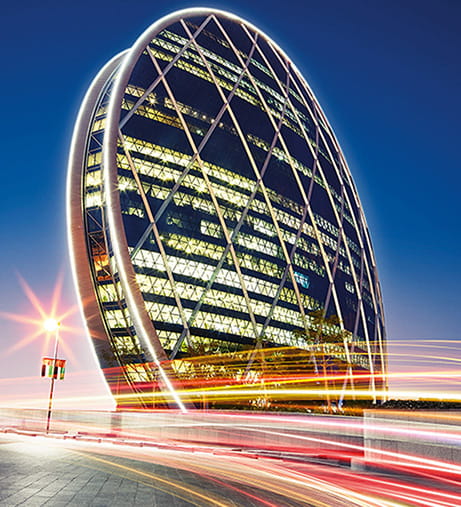#Featured
December 28, 2023
Sustainable Design for Better Homebuying
Real estate is undergoing an eco-transformation, with more companies incorporating environmental sustainability into their property designs and buildings. In today’s market, buyers are increasingly drawn to homes that emphasise sustainable designs and energy-efficiency. A knowledgeable real estate agent recognizes that property listings must align with these preferences, as green homes are becoming the standard for modern living.
Governments also prioritize environmental sustainability, enacting regulations shaping property construction to promote cleaner environments and healthier communities. These laws ensure homes are built with sustainable interior design principles, offering eco-friendly solutions without sacrificing style or comfort.
The benefits of sustainability are clear: from reduced energy costs to improved well-being, sustainable homes provide long-term advantages for homeowners and the planet. As a result, finding properties that meet these standards is easier than ever, allowing buyers to embrace sustainable living without compromising on other essential needs.
To attract buyers interested in sustainable lifestyles and green properties, focus on the following:
1. Energy-Efficient Sustainable Designs
The sustainable design of any property should consider energy consumption, giving the property its green footprint and enhancing the health of its residents and users. So, when showcasing a property, focus on the impact of its design on energy consumption and the benefits it provides in this regard, such as:
- Solar panels
- Natural lighting
- Use of recycled materials in construction
- Advanced electrical systems
- Energy consumption control systems
2. Healthier Living Environments
Sustainable home designs often consider natural lighting, improved air quality, and green spaces. These features enhance well-being and ensure a healthy environment for residents. For example, natural light improves mood and productivity, while good air quality helps reduce the risk of airborne illnesses.
3. Connection with Nature
Sustainable design often integrates green spaces that allow residents to interact with nature. These spaces can enhance the sense of community among residents and provide a connection to nature, which is valuable in urban areas and is very attractive to buyers.
4. Higher Market Value
Real estate properties that incorporate sustainable design features have a higher market value. This is particularly relevant in competitive real estate markets, where the demand has increased due to the growing awareness of the benefits of green living and community well-being.
5. Durability and Lower Maintenance Costs
Sustainable design often involves using environmentally friendly and more durable construction materials and methods requiring less long-term maintenance. This aspect affects satisfaction by reducing regular maintenance, repair, and renovation costs. For example, using high-quality, sustainable materials that do not wear out quickly keeps the building in excellent condition longer. This durability reflects on the living environment, making it more stable and comfortable for buyers.
6. Positive Environmental Impact and Social Responsibility
Buyers are increasingly aware of the importance of environmental stewardship and social responsibility. Sustainable design aligns with these values and meets the needs of eco-conscious buyers. Living or working in a building that uses renewable energy sources, recycles waste, and reduces carbon emissions enhances self-satisfaction and fosters a constant sense of positivity. This satisfaction is crucial, as it appeals to individuals and companies seeking to align their values with their environmental impact.
Sustainable Interior Design
Shifting from the general benefits of sustainable design, we see the crucial role of interior design in boosting buyer satisfaction. Sustainable interior design focuses on optimising living spaces in line with sustainability principles. Key elements include:
-
Environmentally Friendly Materials
Selecting eco-friendly, non-toxic materials for furniture, flooring, and paints improves indoor air quality, fostering a healthier living environment.
-
Energy Efficiency
Central to sustainable living, energy-efficient lighting and appliances, alongside water-saving fixtures, are vital for eco-friendly homes.
-
Human-Centric Design
This approach prioritises comfort and enjoyment in home layouts. It involves strategic furniture placement and maximising natural light for illumination and heating. Implementing recycled water systems for green spaces also reflects a commitment to sustainability.
-
Integration of Biophilic Elements
Incorporating elements like indoor plants enhances tranquillity and visual appeal while improving air quality.
These aspects boost buyer satisfaction, showcasing a property's potential for a vibrant, luxurious, and sustainable lifestyle. They make interiors visually appealing, comfortable, healthy, and eco-friendly, aligning with modern real estate trends.
Challenges of Sustainable Designs
Despite their many benefits, real estate companies face challenges in implementing sustainable architecture, including higher initial construction costs. But, they are cost-effective and an investment in the long run. There is also a need to spread awareness and continuous engagement of residents to educate them about the benefits and features of sustainability and the effects of sustainable living.
Rapid technological development in sustainable design can render some technologies outdated. This is a probable financial and practical challenge for buildings with the latest technologies. Also, sustainable design often requires special maintenance and operational knowledge. The need for continuous education of engineers and residents can be challenging.
The marriage of design and sustainability is not just about the looks and functionality of buildings, but rather a holistic approach that considers factors like long-lastingness, cost-effectiveness, and environmental and social values. As people are more conscious of environmental issues, sustainable design will become crucial in modern architecture and real estate development.

